This morning we welcomed artists, Elena Kirby and Masumi Rodriguez, to share their knowledge of paper making with invasive ivy.

Elena & Masumi had spent 7 months studying the traditional art of papermaking (washi) in Kochi, Japan. They studied at a Kozo (mulberry) farm, and so began their practice by harvesting kozo for paper making. However, after being asked to help pull the Karamushi weeds growing beside the kozo at the farm, Elena & Masumi decided to experiment with using these and other invasive plants to create paper.
Traveling to Vancouver about a month ago, Elena & Masumi continued their exploration of using invasive plant material to create paper. They sought out local stewardship groups, such as Free the Fern, to partner with and gather plant material together. Elena & Masumi experimented with using invasive Himalayan blackberry to make paper, without success. They then tried using English ivy, which turned out to be a more successful material.
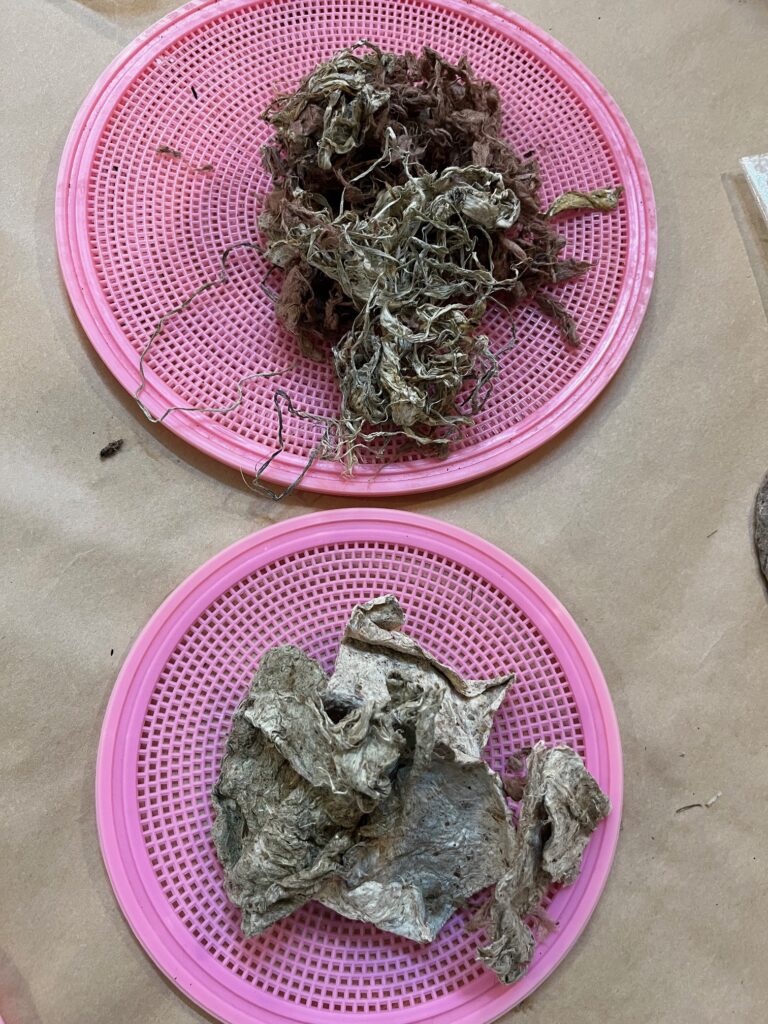
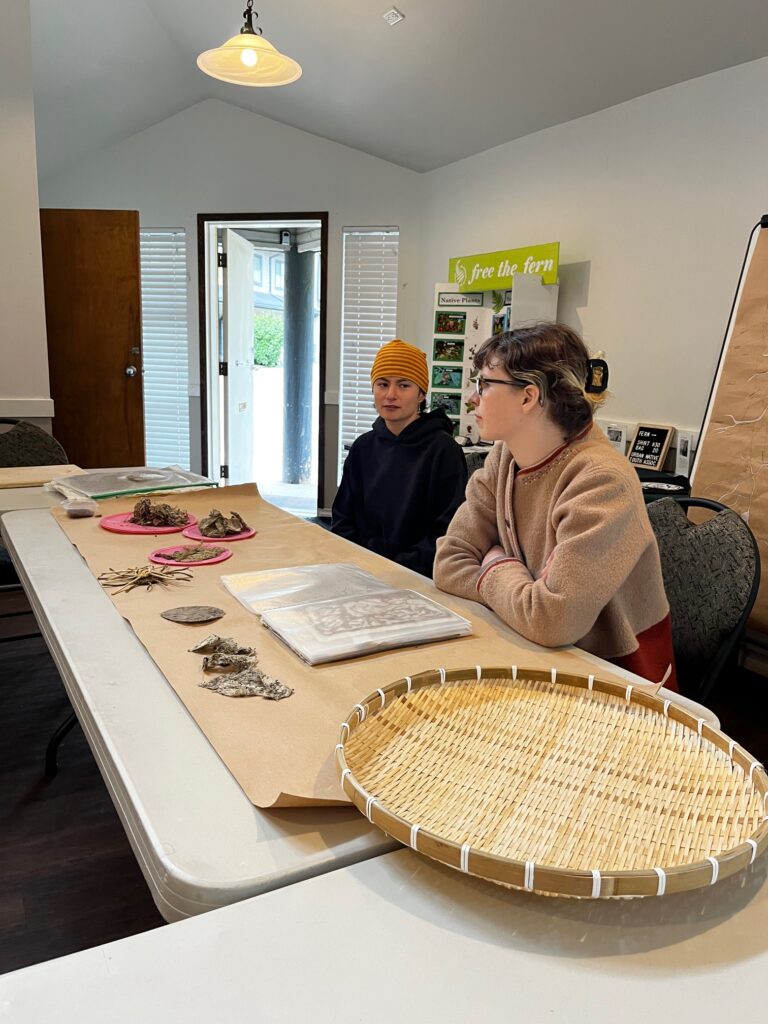
In an effort to connect with and honour this place, Elena and Masumi also created a hand-drawn map of the area they spent most of their time working – False Creek. They drew out the former streams, now burried beneath the ground. Masumi pointed out “water is involved with paper making every step of the way”. Tied to these lost streams is also an acknowledgement of the first people’s of this land, including the xʷməθkʷəy̓əm (Musqueam), Sḵwx̱wú7mesh (Squamish), and səlilwətaɬ (Tsleil-Waututh) nations.
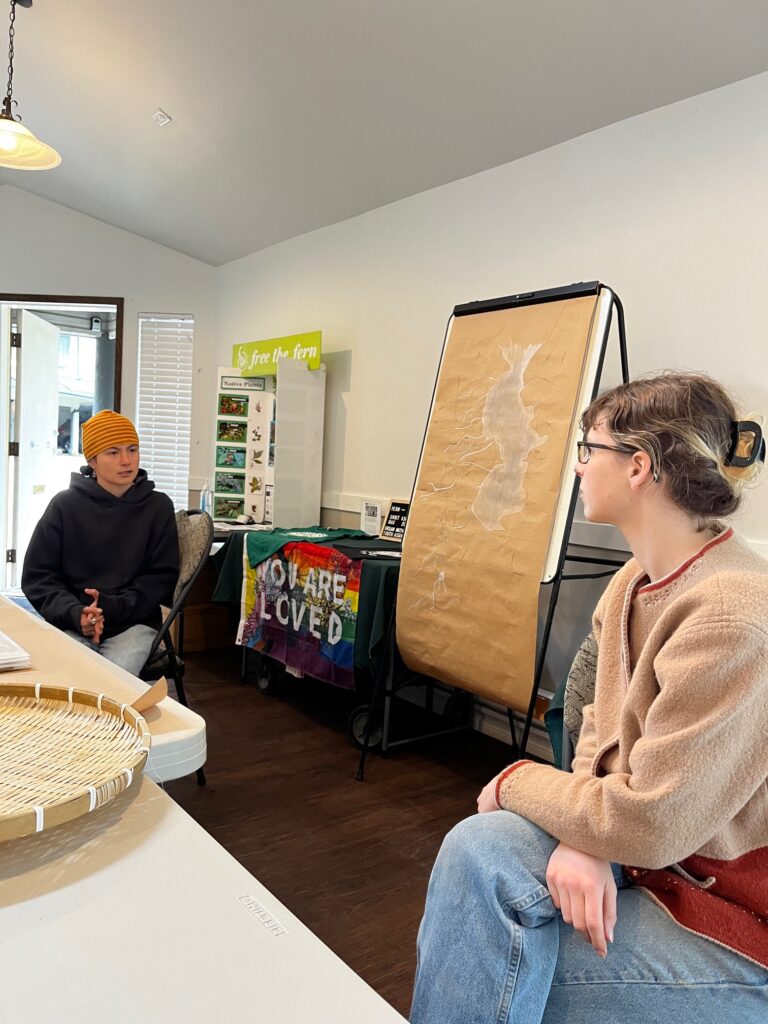
To introduce participants to the process of paper making, Elena & Masumi gave everyone a piece of kozo (mulberry) from Japan. They then invited participants to use a butter knife to scrape away the outer bark, releasing the inner ligher layer of the plant.
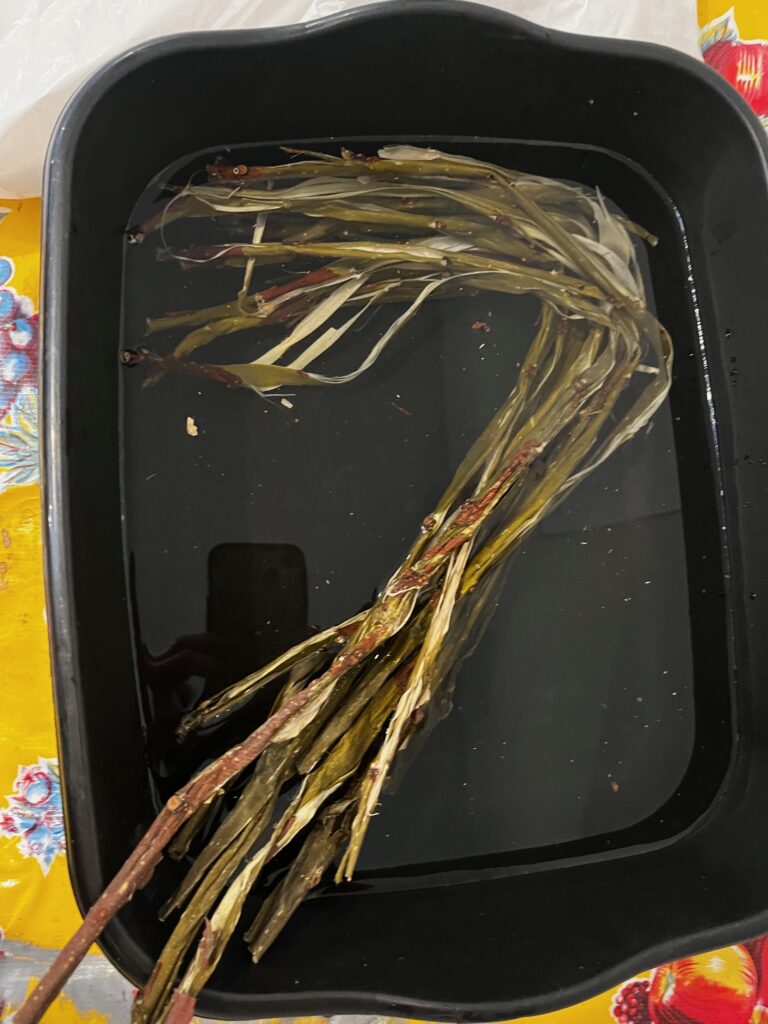

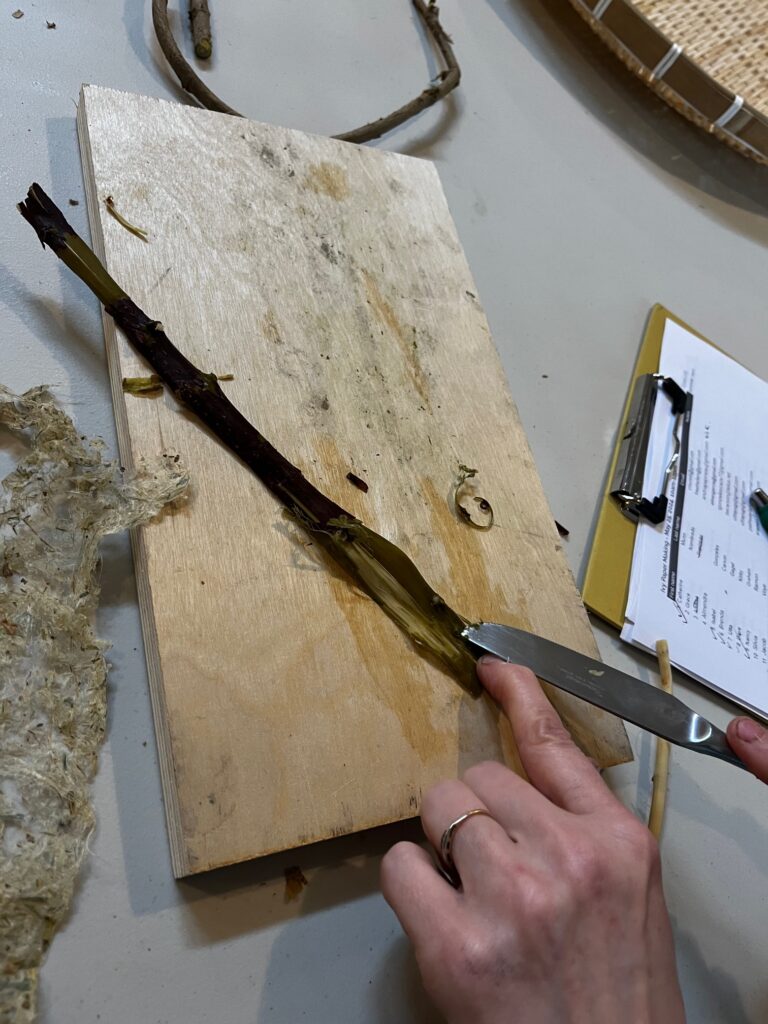
Using kozo was then contrasted with using English ivy vines. Each participant got a piece of a vine that had been boiled for 20 minutes. With only the pull of our fingers, the outer bark peeled away quite easily (no need for the use of a knife) and the inner, lighter layer could be peeled easily appart, leaving only the “phloem” (the centre of the stem) remaining. We each made small piles of the inner bark, which we would use to create paper pulp.
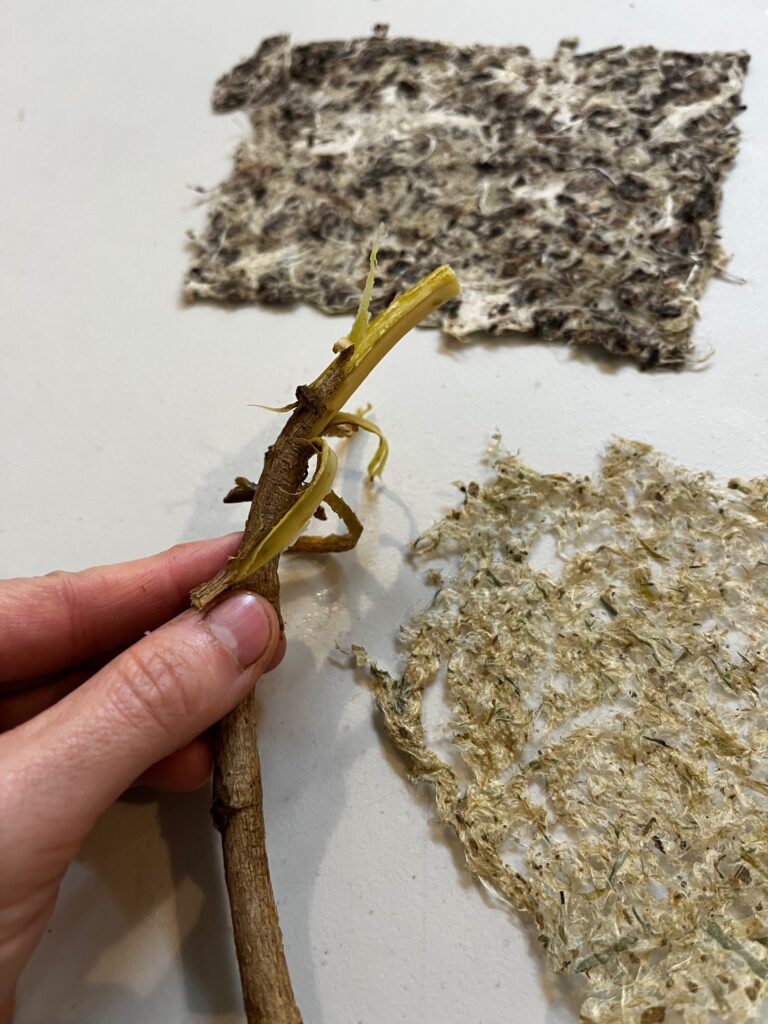

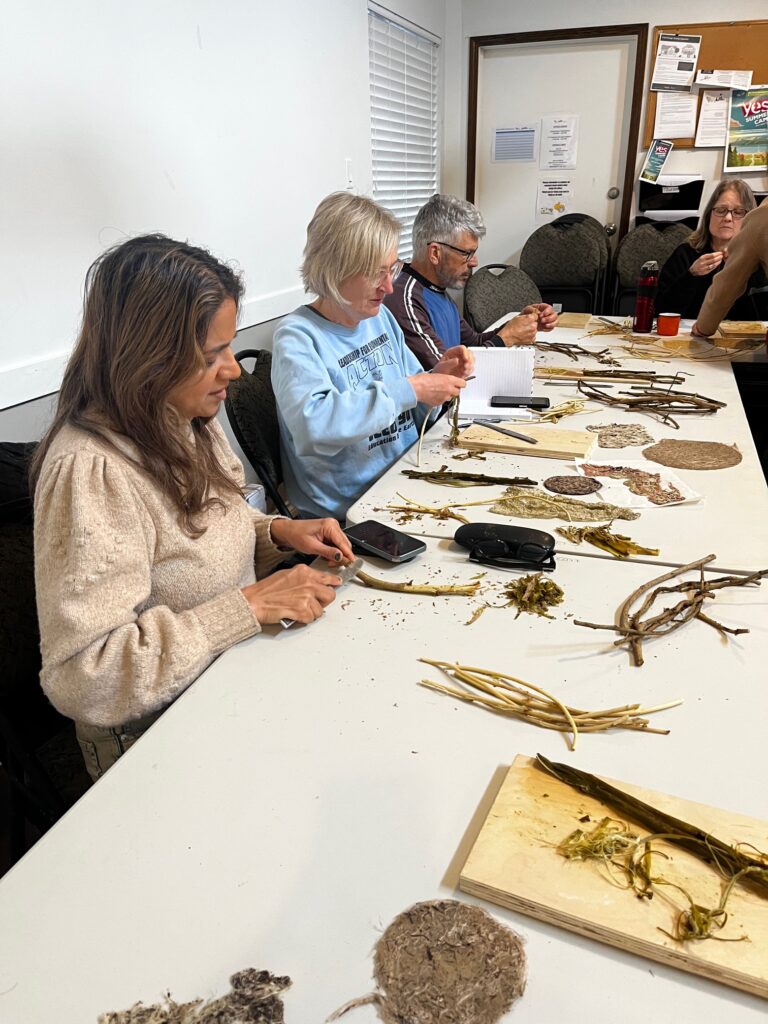



The lighter bark we removed was then boiled with a few dashes of soda ash (washing soda) for 20-30 minutes (but could be boiled for up to 2 hours) and then blended.
To make the pulp thicker, stickier, and hold together better, we added the “slime” extracted from okra soaked in water. The okra “slime” had been prepared the day before by cutting up and boiling pieces of okra in water. The okra mixture was then added to the pulp until it was deemed to be not too thick, not too thin, but just right (only to be determined by plunging your fingers deep in the sticky mixture!).
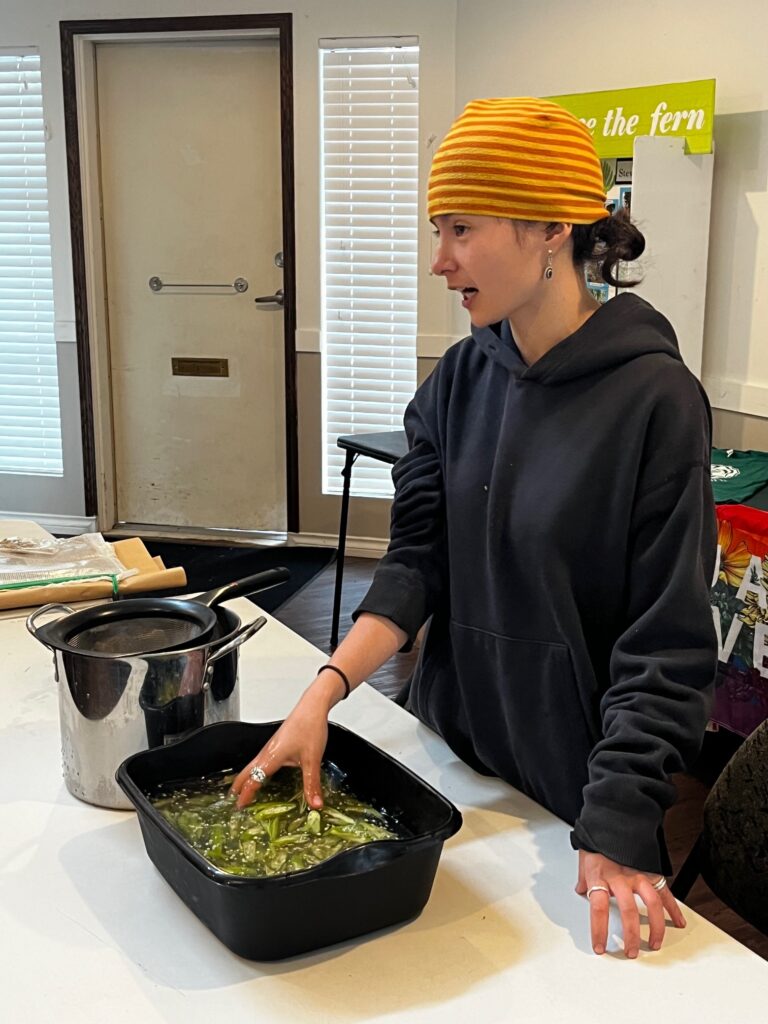
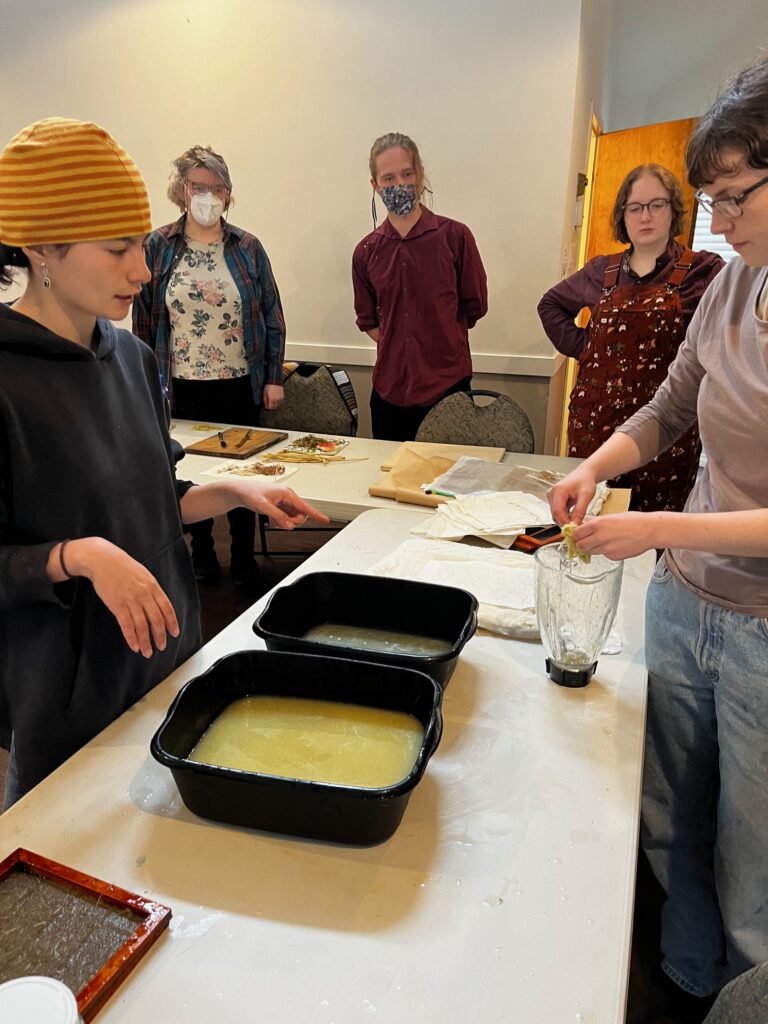
The pulp/okra mix was now ready to be made into paper! Using a wooden frame paired with a sushi mat, we dipped it into the pulp mixture, letting it settle and spread in the frame. We repeated this process of dipping and draining 3 times, until the desired pulp thickness had been achieved. We then flipped the paper pulp onto a piece of cloth and peeled it off the sushi mat. This very wet paper would then be hung to dry at home.
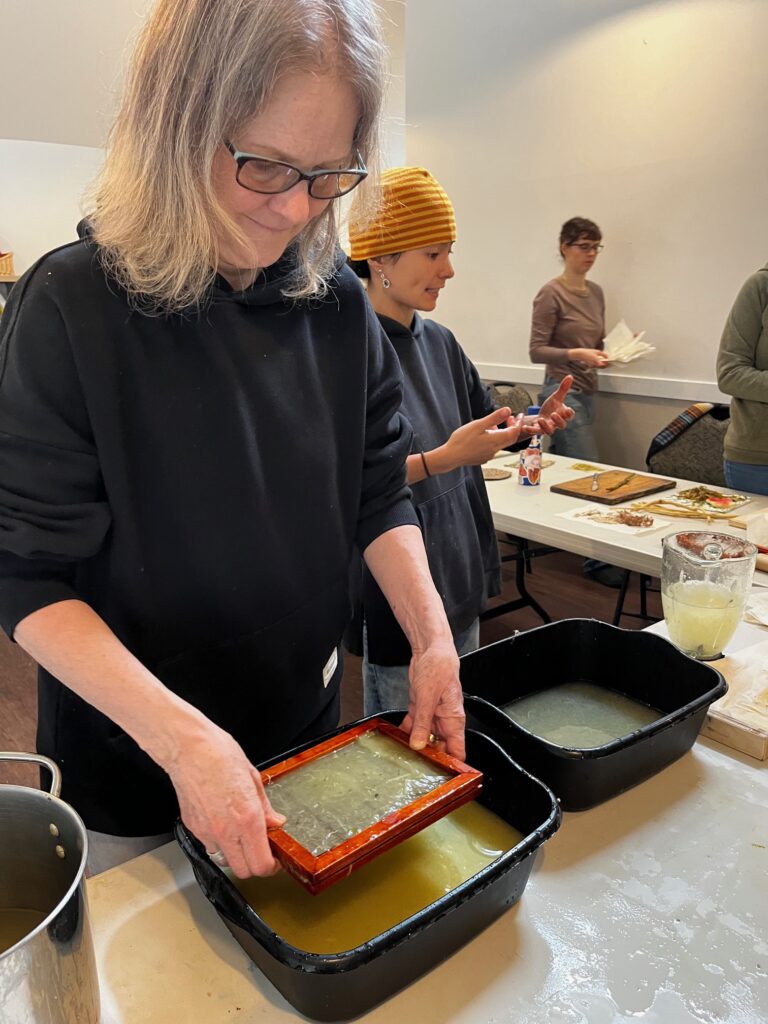
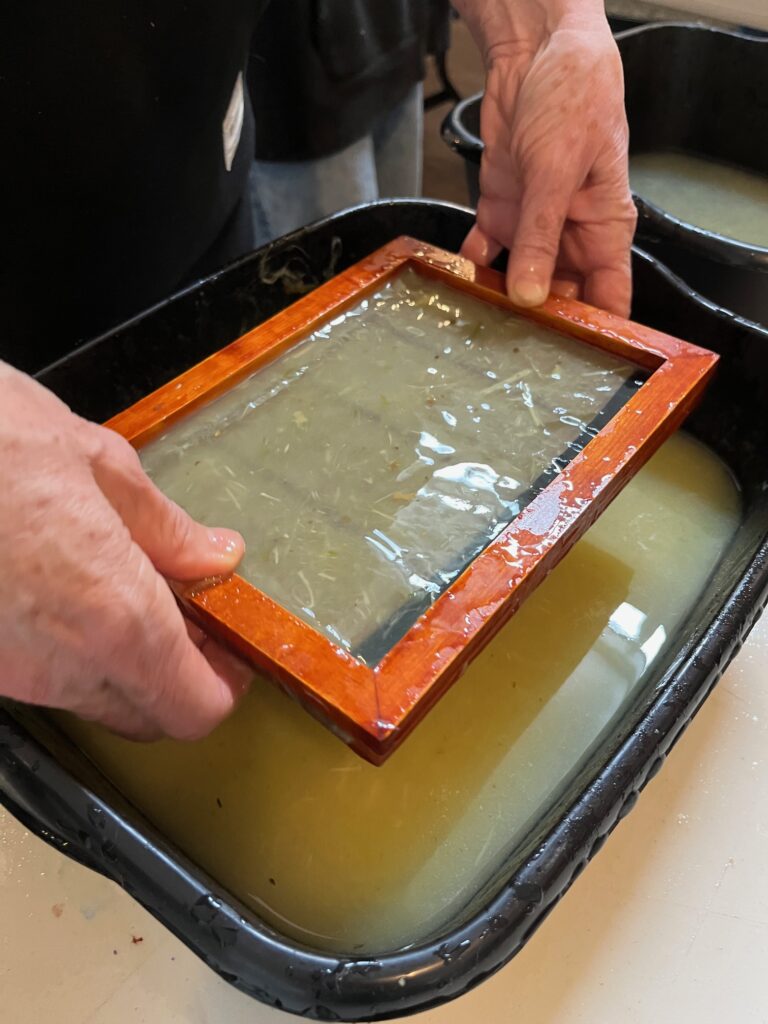
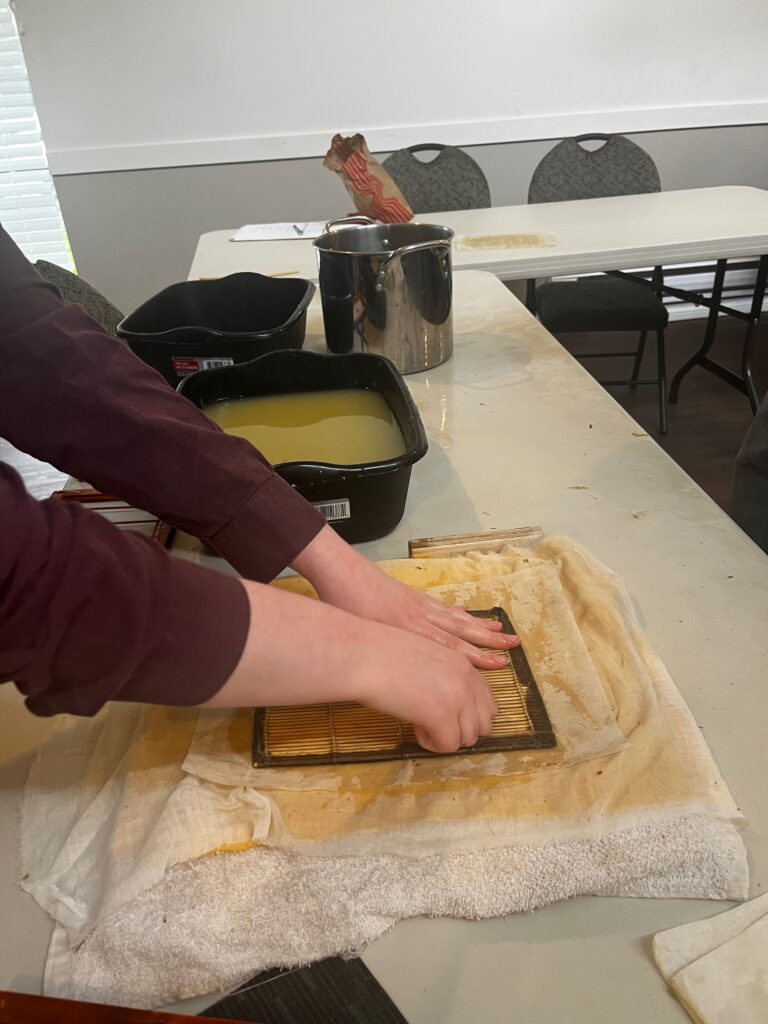

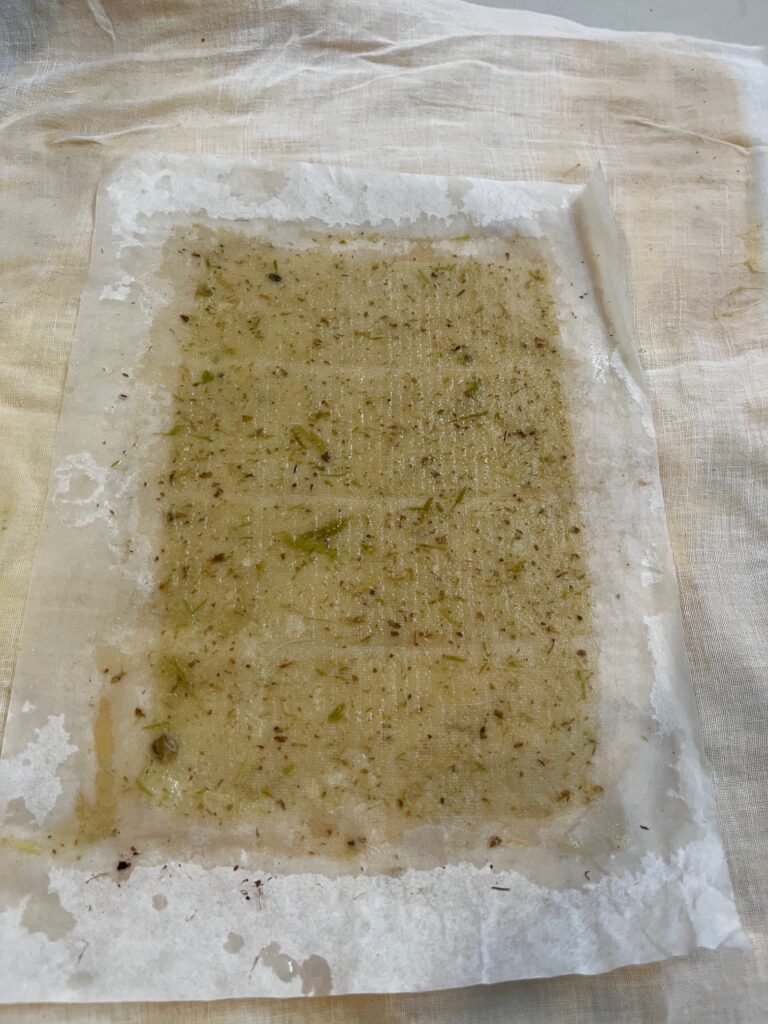
Learning to make paper in a the traditional Japanese method was an exercise in patience. We had to slow down to really connect with the plant to compelete all the steps of the process. In addition, we were able to connect with each other, sharing stories as we went. Paper making is really a community building activity! So much of this is lost with mass paper production!
We are grateful to Masumi and Elena for sharing their traditional knolwedge of paper making. We wish them the best as they continue their journey exploring paper making with invasive plants (they will be off to Montreal and Toronto next!)
To learn more about Masumi Rodriguez & Elena Kirby and their experiments with paper making, check out their website.